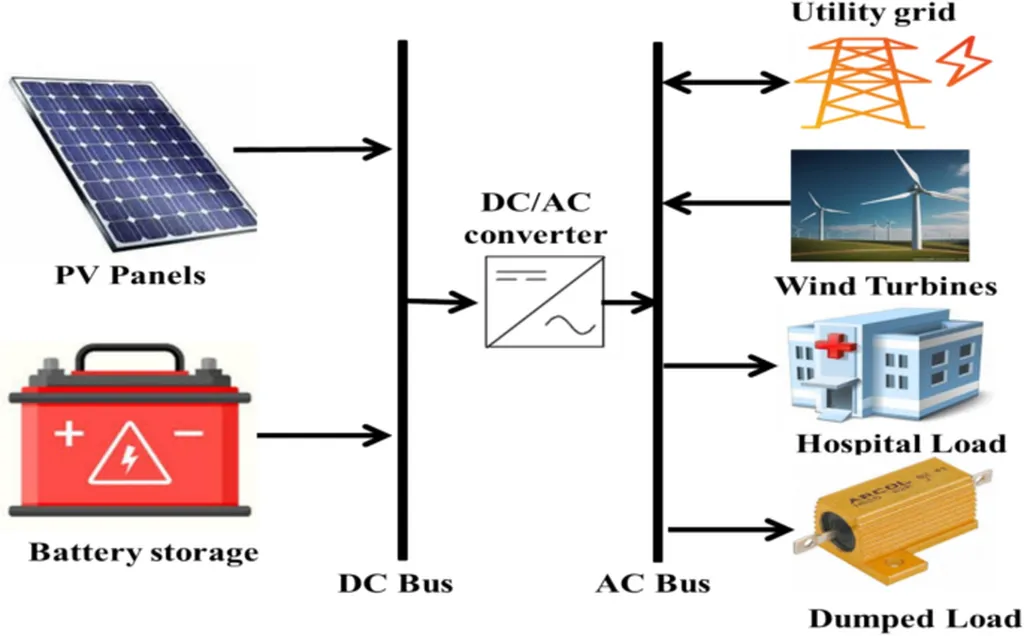In a significant stride towards optimizing renewable energy integration, researchers have unveiled a comprehensive study on the dynamic behavior of hybrid microgrids (HµGs) under various configurations. Published in the *Journal of International Transactions on Electrical Energy Systems*, the research led by Abraham O. Amole from the Department of Electrical, Electronics and Telecommunication Engineering, offers critical insights into the challenges and opportunities presented by integrating renewable energy sources into power grids.
The study, which models HµGs incorporating solar photovoltaic (PV) systems, wind turbine generation (WTG), diesel generators (DG), and battery energy storage systems (BESS), simulates two operational cases: grid-connected and standalone modes. Each case is evaluated through three scenarios using MATLAB/Simulink, providing a robust framework for analyzing key parameters such as voltage, frequency, power contributions, and battery state of charge (SoC).
One of the most striking findings is the significant impact of system configuration on HµG voltage and frequency. “Changes in system configuration can lead to maximum deviations reaching 54 Hz, 17 kV, and 5.8 kV,” notes Amole. This highlights the delicate balance required to maintain grid stability when integrating renewable energy sources.
The research also reveals that frequency instability is particularly pronounced in scenarios involving WTG integration. “Our sensitivity analysis underscores the critical role of load variations on frequency stability,” Amole explains. This insight is crucial for network planners and operators aiming to ensure efficient integration of renewable energy into power grids.
The commercial implications of this research are substantial. As the energy sector increasingly turns to renewable sources, understanding the dynamic behavior of HµGs becomes paramount. The study provides actionable benchmarks for network planners and operators, offering a roadmap for optimizing grid performance and stability.
Moreover, the research underscores the importance of careful planning and optimization in renewable energy integration. By addressing the challenges highlighted in this study, the energy sector can move towards a more stable and efficient grid, ultimately benefiting consumers and the environment alike.
As the world continues to grapple with the complexities of renewable energy integration, this research serves as a beacon, guiding the way towards a more sustainable and stable energy future. The findings not only shape future developments in the field but also pave the way for more innovative and efficient energy solutions.

